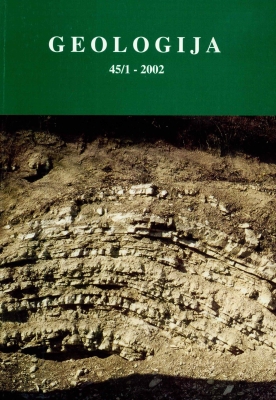Significance of myIonites and phyllonites in the Pohorje and Kobansko area
DOI:
https://doi.org/10.5474/geologija.2002.013Abstract
The wide distribution of mylonites and phyllonites in the Pohorje and Kobansko areas is the consequence of the extensive northward thrusting caused by the Cretaceous collision of the European and African plates. In the accretionary wedge meta-ultrabasites with parts of the oceanic crust were incorporated between the nappes and tectonically transported to higher levels. Ascending of the cizlakite and granodiorite melts resulted into the core structure of the Pohorje. The highest were emplaced the most metamorphosed rocks of the eclogite facies. Rocks of the Pohorje Formation continue on the other side of the Ribnica-Selnica stair-like structure in the Kobansko area. The influence of the thrusting is noticed also in the Pohorje granodiorite, which is slightly altered in the zeolite facies conditions. Part of it (Pekrska gorca) was detached and probably in the final stage of thrusting displaced for at least 11 km toward NNE. The eastern prolongation of the Pohorje massif subsided toward the Panonian basin. The pivotal Labot fault separated Pohorje and Kobansko areas from Karavanke and Strojna in Neogene. Along it the NW part of the Pohorje block was downthrown.Downloads
How to Cite
Trajanova, M. (2002). Significance of myIonites and phyllonites in the Pohorje and Kobansko area . Geologija, 45(1), 149–162. https://doi.org/10.5474/geologija.2002.013
Issue
Section
Articles

